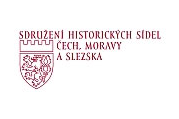![]()
![]()
![]()
![]()
Walk from Sedlec to the Kaňk Hills
One of the oldest parts of Kutná Hora is Sedlec and Kaňk, a former miners‘ settlement. On this walk you will discover not only the beauty of the oldest cathedral in Central Europe, but also uncover the secrets of tobacco production, descend into the world-famous Ossuary and enjoy an unusual view of the silver city from the Kaňk Lookout Tower. For guidance, follow the yellow markings of the Czech Tourist Club (Klub českých turistů). The route is supplemented by information boards elected by the Denemark Association, whose educational cycling path “Around Kutná Hora“ also leads largerly along this route.
Sedlec Abbey
The first Cistercian monastery in Bohemia was founded in Sedlec (1142). Mining activities commenced in the Kutná Hora region in the second half of the 13th century. Although the monastery was not directly involved in the mining activities, it grew rich primarily from renting land in its possession. These funds led to the construction of the convent temple known as the Cathedral of the Assumption of Our Lady and St John the Baptist. The monastery, including the cathedral, was burned down during the Hussite Wars in the first half of the 15th century, with most of the monks slaughtered. At the turn of the 17th and 18th centuries, the monastery entered a period of growth under Abbot Snopek, who initiated the restoration of the entire abbey. The abbey, along with other monasteries, was abolished in 1784 under a decree of Emperor Joseph II. Subsequently, the monastery was converted into apartments, hospitals and warehouses. Tobacco production was moved to the monastery in 1812, with the first cigarettes produced here in 1882.
Cathedral of the Assumption of Our Lady and St John the Baptist
This convent temple was built by the so-called master of the Sedlec cathedral in 1290 to 1320, at which time it became the first cathedral-type structure as well as the biggest sacral building in Bohemia and Moravia. The cathedral was burned down during the Hussite Wars and remained in ruins for a few centuries. At the turn of the 17th and 18th centuries, under Abbot Snopek, the cathedral was extensively reconstructed, in the course of which were employed the talents of J. B. Santini-Aichel, the exceptional builder of Czech Baroque architecture, with his unique Baroque Gothic style. He incorporated as part of the cathedral a cantilever vault and a cantilever staircase, which are unique construction components. The cathedral was inscribed on UNESCO’s List of World Cultural and Natural Heritage in 1995. Today, you can go on two circuits of the cathedral. The treasury conceals the original Sedlec monstrance, one of the oldest preserved Gothic monstrances in the world. You can view an animated film of the history of the Sedlec monastery in the cathedral’s own cinema.
Former Cistercian monastery and the Philip Morris exhibition
The remains of the buildings of the former Cistercian monastery are located just behind the cathedral. These premises now house the manufacturing headquarters of Philip Morris CR a. s. The company allows visitors to tour the former Baroque monastery, the abbot’s chapel, including the exhibition titled ”Transformations of the Monastery in Sedlec“. Moreover, it is also possible to go on an excursion of the manufacturing plant. The tours are guided and must be booked at least three days in advance for groups of at least five people.
At the entrance to the Philip Morris CR a.s. complex (in Vítězná Street) you can also visit the Philip Morris Exhibition, which an overview of the history and present-day developments of this company. This exhibition is only open to adults over 18 years of age.
Cemetery Church of All Saints with the Ossuary in Sedlec
The Ossuary is located in the underground part of the church cemetery from the 14th century, which consists of two chapels built one above the other. The local cemetery held over 40,000 bodies during the Hussite Wars and the plagues. After the abolition of this vast cemetery at the end of the 15th century, the exhumed bones were deposited outside as well as inside the underground chapel of the church, and in 1511 a half-blind monk stacked them into large pyramids. Gradually, the chapel was decorated with human remains in the spirit of memento mori. After the abolition of the Sedlec monastery, the monastic lands and buildings passed to the hands of the Schwarzenberg family. In 1870, František Rint, the family’s master builder, completed a unique decoration of the underground chapel using bones and skulls. The bones were disinfected and bleached prior to their use. This unique underground chapel is the place of reverence and final resting point of almost 40,000 of those who were here before us.
Kaňk National Natural Landmark
While walking on the Kaňk Hills you can view the ”intertidal facies”, which was pronounced the ”Na Vrších” National Natural Landmark in 1933. This is the remains of Cretaceous sea cliffs.
Hewer’s Hut tourist restaurant and Kaňk Lookout Tower
You can relax and refresh yourself at Hewer’s Hut (Havířská bouda), which is located in the middle of the Kaňk Forest. The complex also includes a 30-metre lookout tower, which was built from solid Cyclopean masonry in 2013. You will take 144 stairs to get to the top, or you can use the elevator, thanks to which this lookout tower is also accessible for the handicapped. The covered viewing terrace, complete with a cafe and restaurant seating 20 people, offers a panoramic view of Kutná Hora as well as the wider area...
Depression
Aside from many historical sources, the depression, which is roughly 30 metres long and was formed in 1969 from the collapsing of old mine passages between the abandoned mines of Kříž (Barbara) and Vidrhol on the Turkaňk Belt, will convince you of the fact that there was mining activity in the Kaňk Hills.
Calvary
You can inspect the Empire memorial standing at the top of the Kaňk Hill, which Count Jan Rudolf Chotek had built in 1814.
Kaňk and the Church of St Lawrence
The Kaňk settlement was established in the second half of the 13th century at the same time as Kutná Hora in connection with the discovery of silver and copper deposits. In 1621, the original mining settlement was promoted to a town by Emperor Ferdinand II, thereby obtaining the same rights as Kutná Hora itself. Mining activities took place in the surroundings of Kaňk until the 20th century, when zinc and lead ores were being extracted. Today, in addition to the remains of mining activities (slag dumps, caved-in shafts) and exceptional views of the silver city, you can also admire the Church of St Lawrence. The church was built between 1489 and 1506 by the builder Matěj Rejsek and master Mikuláš of Kutná Hora. Inside is a sanctuary and pulpit, which is one of the most important Late Gothic works of sculpture in Bohemia. However, the church is not normally open to the public.
You can get back to the city from ”Na Pašince”, in the centre of Kaňk, via the footpath along Kaňkovská Street and then Lorecká Street. Along the way, you can also inspect two chapels on the right-hand side. The extensive grounds of the former Kutná Hora brewery at the end of Lorecká Street will capture your attention.









 cz
cz









